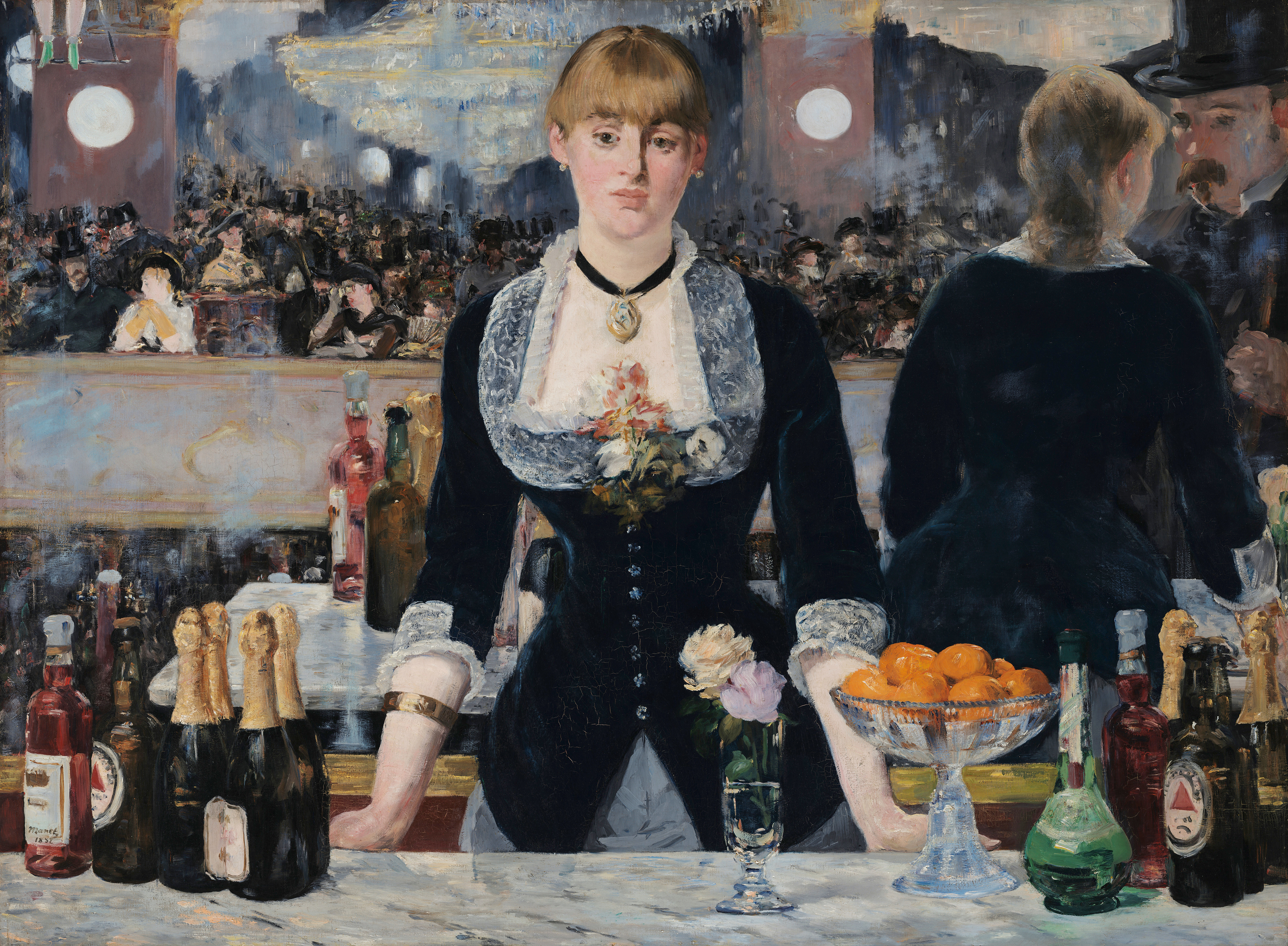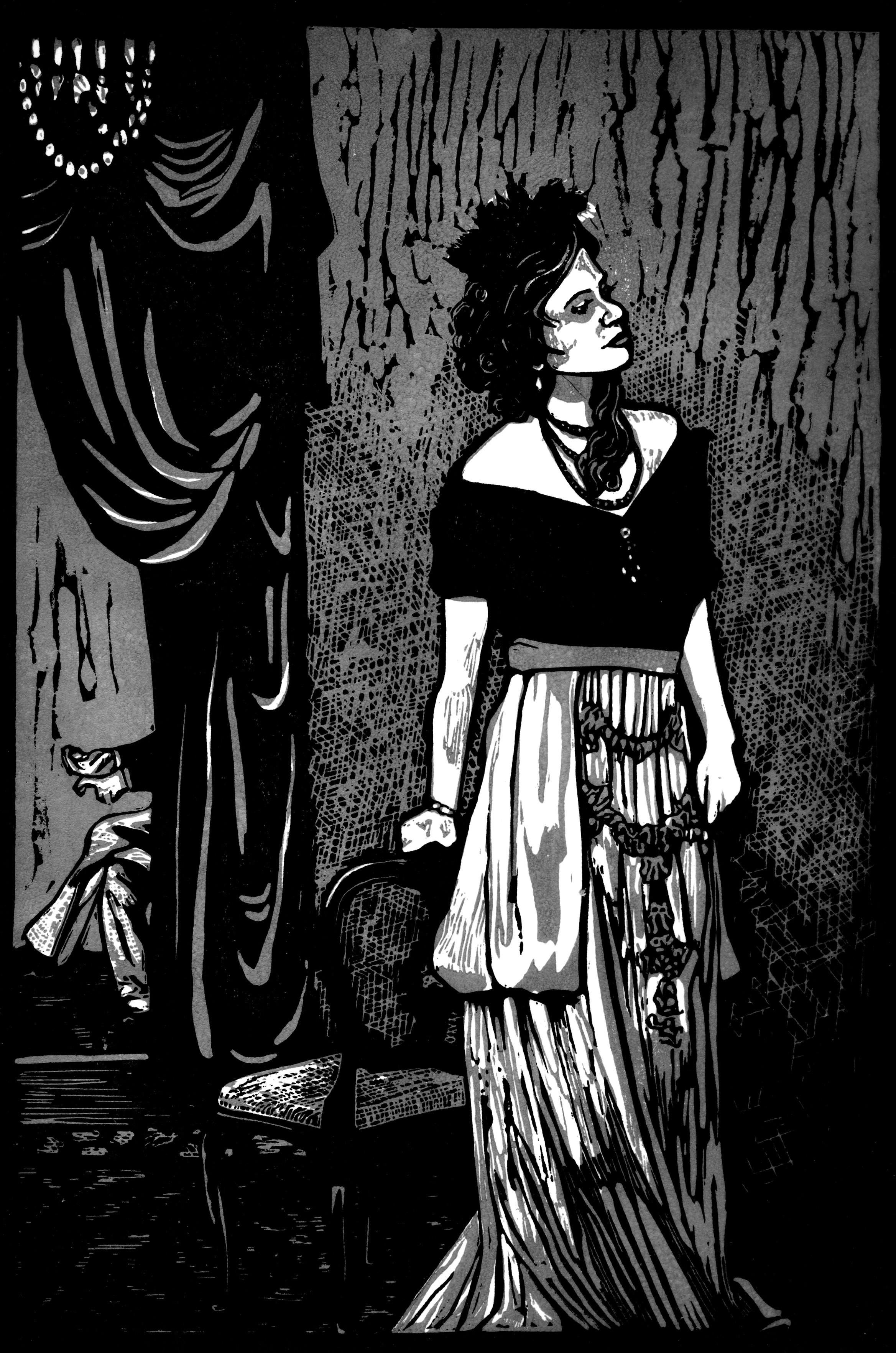About this body of work
From 2014-2020, I lived on a large farm in Louisa, VA, working primarily as a cook. I didn’t have to commute, and I didn’t have much that belonged to me except for time. I used that time to work on printmaking, making about 100 linocuts during those 6 years.
Often purposefully stagey and tongue-in-cheek, these linocuts started out as illustrations for my then-partner’s satiric writing. Later, they developed into an attempt to suggest a narrative in a standalone image. The farm scenery, and the rotating cast of characters who occupied it, all played a part in my work. Many of my farm compatriots were willing models. The fanciful sets and costumes served as a kind of shield for people; it can be easier to be yourself when you’re cast as somebody else.
As part of a long tradition of artistic theft, some of my pieces were ‘direct tributes’ to artists I admire. The first of these was Fright and the Fop, a play on Hieronymus Bosch’s Death and the Miser, as seen here. Both in terms of composition and subject matter, I’ve tried to mirror Bosch without just recreating his picture. Medium and color, of course, being major differences, I suspect that my piece also differs in mood, being somewhat more silly then the slightly nightmarish Bosch scene.
A second theft occurred in 2018, when I decided to take on one of my favorite paintings of all time, A Bar at the Folies-Bergère by Édouard Manet. This painting, in addition to being expertly composed and rendered, is extremely clever. The barmaid is looking at you, the viewer, looking none-too-happy to be taking your order. It takes a moment to realize that the mirror behind her reveals who “you” are: a posh man in a top-hat who is almost certainly making unwelcome advances on the tired barmaid.
I’ve been a bit more explicit in my version of this narrative. My barmaid, though dressed in clothes that would be considered equally suggestive for the time, greets he customer with a significantly less patient demeanor. Her customer’s face betrays a more direct intention and confidence in his position as a wealthy man. Some Easter eggs here include the lemons on the bar (replacing Manet’s oranges), and the Bass ale bottle, unchanged, apparently, since 1882.
The last of the crimes that I will fess up to here is a two-tone print inspired by John Singer Sargent’s famous Madame X. Here, I’ve only stolen the compositional elements, but created a narrative of my own. While Sargent’s painting spoke of sexual liberation– particularly before the controversial fallen shoulder strap was painted over– my piece depicts a woman who finds herself trapped. Just visible in the background is a glimpse of her husband, his body languish suggesting that he is mid-rant or -lecture. The woman stares into space, and though she is dressed to impress, the darkened room suggests that she will not be going out this evening.
The body of work on this website was produced on my small etching press, and created using standard battleship-gray linoleum. Some of the two-tone works employ stencils as well, applying a mouth atomizer (a mouth-powered airbrush) and relying on jigs and Turnes-Burton register pins to ensure good registration. In the spirit of impractical artistry, most of the plates have been destroyed.





